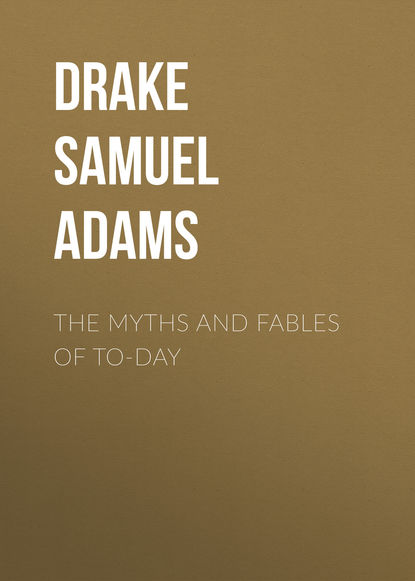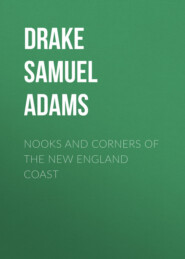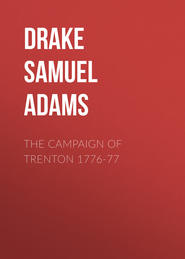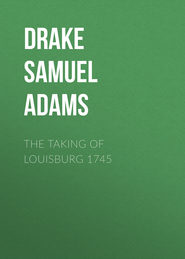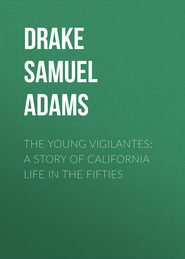По всем вопросам обращайтесь на: info@litportal.ru
(©) 2003-2024.
✖
The Myths and Fables of To-Day
Настройки чтения
Размер шрифта
Высота строк
Поля
One of the oldest of weather rhymes runs in this wise: —
“Evening gray and morning red,
Brings down rain on the traveller’s head;
Evening red and morning gray,
Sends the traveller on his way.”
Science having finally accepted what vulgar philosophy so long maintained, namely that the moon exerts an undoubted influence upon the tides of the sea, all the various popular beliefs concerning her influence upon the weather that have been wafted to us over, we know not how many centuries, find ready credence. If the mysterious luminary could perform one miracle, why not others? Thus reasoned the ignorant multitude.
The popular fallacy that the moon is made of “greene cheese,” as sung by Heywood, and repeated by that mad wag Butler, in “Hudibras,” may be considered obsolete, we suppose, but in our youth we have often heard this said, and, it is to be feared, half believed it.
Cutting the hair on the waxing of the moon, under the delusion that it will then grow better, is another such.
As preposterous as it may seem, our worthy ancestors, or some of them at least, firmly believed that the Man in the Moon was veritable flesh and blood.
In “Curious Myths,” Mr. Baring-Gould refers the genesis of this belief to the Book of Numbers.[3 - Chap. 15, 32 v.]
An old Scotch rhyme runs thus: —
“A Saturday’s change and a Sunday’s prime,
Was nivver gude mune in nae man’s time.”
If the horns of the new moon are but slightly tipped downward, moderate rains may be looked for; if much tipped, expect a downpour. On the other hand, if the horns are evenly balanced, it is a sure sign of dry weather. Some one says in “Adam Bede,” “There’s no likelihood of a drop now an’ the moon lies like a boat there.” The popular notion throughout New England is that when the new moon is turned downward, it cannot hold water. Hence the familiar sayings of a wet or a dry moon.
If the Stormy Petrel (Mother Cary’s Chicken) is seen following in the wake of a ship at sea, all sailors know that a storm is brewing, and that it is time to make all snug on board. As touching this superstition, I find the following entry in the Rev. Richard Mather’s Journal: “This day, and two days before, we saw following ye ship a little bird, like a swallow, called a Petterill, which they say doth follow ships against foule weather.”
Therefore, in honest Jack’s eyes, to shoot one of these little wanderers of the deep, not only would invite calamity, but would instantly bring down a storm of indignation on the offender’s head. And why, indeed, should this state of mind in poor Jack be wondered at, when he hears so much about kraaken, mermaids, sea-serpents, and the like chimera, and when those who walk the quarter-deck readily lend themselves to the fostering of his delusions?
A mare’s tail in the morning is another sure presage of foul weather. This consists in a long, low-hanging streak of murky vapor, stretching across a wide space in the heavens, and looking for all the world like the trailing smoke of some ocean steamer, as is sometimes seen long before the steamer heaves in sight. The mare’s tail is really the black signal of the advancing storm, drawn with a smutty hand across the fair face of the heavens. Hence the legend, —
“Mackerel sky and mare’s tails
Make lofty ships carry low sails.”
If the hedgehog comes out of his hole on Candlemas Day,[4 - Candlemas Day (2 February) is observed as a festival day by the Roman Catholics, and still holds a place in the calendar of the Episcopal Church. It is kept in memory of the purification of the Virgin, who presented the infant Jesus in the Temple. A number of candles were lighted, it is said in memory of Simeon’s song (Luke ii, 32), “A light to lighten the Gentiles.” Hence the name of Candlemas. Edward VI. forbade the practice of lighting the churches in 1548.] and sees his shadow, he goes back to sleep again, knowing that the winter is only half over. Hence the familiar prediction: —
“If Candlemas day is fair and clear,
There’ll be two winters in the year.”
The same thing is said of the bear, in Germany, as of the hedgehog or woodchuck.
The Germans say that the badger peeps out of his hole on Candlemas Day, and if he finds snow on the ground, he walks abroad; but if the sun is shining, he draws back into his hole again. At any rate, the habits of this predatory little beast are considered next to infallible by most country-folk in New England.
A similar prediction carries this form: On Candlemas Day just so far as the sun shines in, just so far will the snow blow in.
“As far as the sun shines in on Candlemas Day
So far will the snow blow in before May:
As far as the snow blows in on Candlemas Day
So far will the sun shine in before May.”
From these time-honored prophecies is deduced the familiar warning: —
“Just half your wood and half your hay
Should be remaining on Candlemas Day.”
An old Californian predicted a dry season for the year 1899, because he had noticed that the rattlesnakes would not bite of late, a never failing sign of drought which few, we fancy, would feel inclined to put to the test.
An unusually cold winter is indicated by the greater thickness of apple skins, corn husks, and the like.
The direction from which the wind is blowing usually indicates what the weather will be for the day, – wet or dry, hot or cold, – but here is a rhymed prediction which puts all such prophecies to shame: —
“The West wind always brings wet weather
The East wind wet and cold together,
The South wind surely brings us rain,
The North wind blows it back again.
If the sun in red should set,
The next day surely will be wet;
If the sun should set in gray,
The next will be a rainy day.”
This falls more strictly in line with many of the so-called signs which, like the old woman’s indigo, if good would either sink or swim, she really didn’t know which; or like the predictions of the old almanac makers, who so shrewdly foretold rain in April, and snow in December.
IV
SIGNS OF ALL SORTS
“Authorized by her grandam.” —Macbeth.
If you sneeze before breakfast, you will have company before dinner.
If you pick the common red field lily, it will make you freckled.
A spark in the candle denotes a letter in the post office for you.
To hand a cup with two spoons in it to any one, is a sign of a coming wedding in the family.
If a cat is allowed to get into bed with an infant, the child will be strangled by the animal sucking its breath, or by lying across its chest.
If my right ear burns, some one is talking about me, hence the familiar saying, “I’ll make his ears tingle for him.” Pliny records this omen. Also in “Much Ado About Nothing,” Beatrice exclaims, “What fire is in mine ears!”
When the right ear itches or burns, the person so affected will shortly cry; when it is the left, he will laugh. One version runs in this wise: —
“Left or right
Good at night.”
Late blossoming of vines or fruit trees will be followed by much sickness. This probably rests upon the theory that a mild autumn will be a sickly autumn, which is the same thing as saying that unseasonable weather is pretty sure to be unwholesome weather. The same prediction is expressed by the old saying that “A green Christmas makes a fat church-yard.” Both predictions agree with the observations of medical science.
A spoon in the saucer and another in the cup denote that the person using them will be a spendthrift, and probably come to want; but two spoons to one dish of ice-cream denote foresight and true thrift.
“Sing before you eat,
Cry before you sleep.”
“Evening gray and morning red,
Brings down rain on the traveller’s head;
Evening red and morning gray,
Sends the traveller on his way.”
Science having finally accepted what vulgar philosophy so long maintained, namely that the moon exerts an undoubted influence upon the tides of the sea, all the various popular beliefs concerning her influence upon the weather that have been wafted to us over, we know not how many centuries, find ready credence. If the mysterious luminary could perform one miracle, why not others? Thus reasoned the ignorant multitude.
The popular fallacy that the moon is made of “greene cheese,” as sung by Heywood, and repeated by that mad wag Butler, in “Hudibras,” may be considered obsolete, we suppose, but in our youth we have often heard this said, and, it is to be feared, half believed it.
Cutting the hair on the waxing of the moon, under the delusion that it will then grow better, is another such.
As preposterous as it may seem, our worthy ancestors, or some of them at least, firmly believed that the Man in the Moon was veritable flesh and blood.
In “Curious Myths,” Mr. Baring-Gould refers the genesis of this belief to the Book of Numbers.[3 - Chap. 15, 32 v.]
An old Scotch rhyme runs thus: —
“A Saturday’s change and a Sunday’s prime,
Was nivver gude mune in nae man’s time.”
If the horns of the new moon are but slightly tipped downward, moderate rains may be looked for; if much tipped, expect a downpour. On the other hand, if the horns are evenly balanced, it is a sure sign of dry weather. Some one says in “Adam Bede,” “There’s no likelihood of a drop now an’ the moon lies like a boat there.” The popular notion throughout New England is that when the new moon is turned downward, it cannot hold water. Hence the familiar sayings of a wet or a dry moon.
If the Stormy Petrel (Mother Cary’s Chicken) is seen following in the wake of a ship at sea, all sailors know that a storm is brewing, and that it is time to make all snug on board. As touching this superstition, I find the following entry in the Rev. Richard Mather’s Journal: “This day, and two days before, we saw following ye ship a little bird, like a swallow, called a Petterill, which they say doth follow ships against foule weather.”
Therefore, in honest Jack’s eyes, to shoot one of these little wanderers of the deep, not only would invite calamity, but would instantly bring down a storm of indignation on the offender’s head. And why, indeed, should this state of mind in poor Jack be wondered at, when he hears so much about kraaken, mermaids, sea-serpents, and the like chimera, and when those who walk the quarter-deck readily lend themselves to the fostering of his delusions?
A mare’s tail in the morning is another sure presage of foul weather. This consists in a long, low-hanging streak of murky vapor, stretching across a wide space in the heavens, and looking for all the world like the trailing smoke of some ocean steamer, as is sometimes seen long before the steamer heaves in sight. The mare’s tail is really the black signal of the advancing storm, drawn with a smutty hand across the fair face of the heavens. Hence the legend, —
“Mackerel sky and mare’s tails
Make lofty ships carry low sails.”
If the hedgehog comes out of his hole on Candlemas Day,[4 - Candlemas Day (2 February) is observed as a festival day by the Roman Catholics, and still holds a place in the calendar of the Episcopal Church. It is kept in memory of the purification of the Virgin, who presented the infant Jesus in the Temple. A number of candles were lighted, it is said in memory of Simeon’s song (Luke ii, 32), “A light to lighten the Gentiles.” Hence the name of Candlemas. Edward VI. forbade the practice of lighting the churches in 1548.] and sees his shadow, he goes back to sleep again, knowing that the winter is only half over. Hence the familiar prediction: —
“If Candlemas day is fair and clear,
There’ll be two winters in the year.”
The same thing is said of the bear, in Germany, as of the hedgehog or woodchuck.
The Germans say that the badger peeps out of his hole on Candlemas Day, and if he finds snow on the ground, he walks abroad; but if the sun is shining, he draws back into his hole again. At any rate, the habits of this predatory little beast are considered next to infallible by most country-folk in New England.
A similar prediction carries this form: On Candlemas Day just so far as the sun shines in, just so far will the snow blow in.
“As far as the sun shines in on Candlemas Day
So far will the snow blow in before May:
As far as the snow blows in on Candlemas Day
So far will the sun shine in before May.”
From these time-honored prophecies is deduced the familiar warning: —
“Just half your wood and half your hay
Should be remaining on Candlemas Day.”
An old Californian predicted a dry season for the year 1899, because he had noticed that the rattlesnakes would not bite of late, a never failing sign of drought which few, we fancy, would feel inclined to put to the test.
An unusually cold winter is indicated by the greater thickness of apple skins, corn husks, and the like.
The direction from which the wind is blowing usually indicates what the weather will be for the day, – wet or dry, hot or cold, – but here is a rhymed prediction which puts all such prophecies to shame: —
“The West wind always brings wet weather
The East wind wet and cold together,
The South wind surely brings us rain,
The North wind blows it back again.
If the sun in red should set,
The next day surely will be wet;
If the sun should set in gray,
The next will be a rainy day.”
This falls more strictly in line with many of the so-called signs which, like the old woman’s indigo, if good would either sink or swim, she really didn’t know which; or like the predictions of the old almanac makers, who so shrewdly foretold rain in April, and snow in December.
IV
SIGNS OF ALL SORTS
“Authorized by her grandam.” —Macbeth.
If you sneeze before breakfast, you will have company before dinner.
If you pick the common red field lily, it will make you freckled.
A spark in the candle denotes a letter in the post office for you.
To hand a cup with two spoons in it to any one, is a sign of a coming wedding in the family.
If a cat is allowed to get into bed with an infant, the child will be strangled by the animal sucking its breath, or by lying across its chest.
If my right ear burns, some one is talking about me, hence the familiar saying, “I’ll make his ears tingle for him.” Pliny records this omen. Also in “Much Ado About Nothing,” Beatrice exclaims, “What fire is in mine ears!”
When the right ear itches or burns, the person so affected will shortly cry; when it is the left, he will laugh. One version runs in this wise: —
“Left or right
Good at night.”
Late blossoming of vines or fruit trees will be followed by much sickness. This probably rests upon the theory that a mild autumn will be a sickly autumn, which is the same thing as saying that unseasonable weather is pretty sure to be unwholesome weather. The same prediction is expressed by the old saying that “A green Christmas makes a fat church-yard.” Both predictions agree with the observations of medical science.
A spoon in the saucer and another in the cup denote that the person using them will be a spendthrift, and probably come to want; but two spoons to one dish of ice-cream denote foresight and true thrift.
“Sing before you eat,
Cry before you sleep.”





